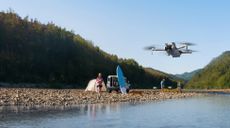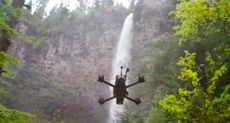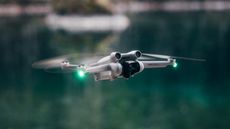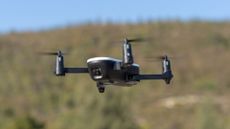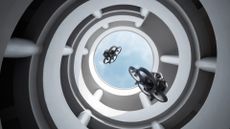The best drones have revolutionised the world of aerial videography (and photography) for both professionals and hobbyists. Whereas once you would have needed to hire a helicopter and a pilot to shoot any kind of footage from the air, today you can capture fantastic videos with both feet planted firmly on the ground while operating a pocket-sized drone capable of shooting landscapes in stunning 4K.
Modern drones are like the equivalent of a flying tripod, and they are brilliant for shooting holiday scenes and travelogues. Some models will even follow you automatically, shooting high-res footage of you tearing down a ski slope or traversing rocky terrain on a mountain bike. If you're thinking about investing – and today's very best drones certainly are an investment – you've come to the right place.
If your budget doesn't quite allow you to buy the latest DJI drones, check out T3's best cheap drone guide – plenty of affordable alternatives are listed there. Less experienced pilots are better off picking one of the best beginner drones instead. Finally, if you're after a drone for your little one, we'd recommend our best drones for kids roundup.
The best drone to buy right now
Why you can trust T3 Our expert reviewers spend hours testing and comparing products and services so you can choose the best for you. Find out more about how we test.

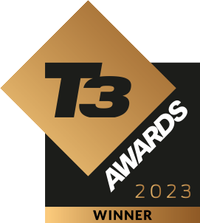
The Mavic 3 Classic is, to all intents and purposes, exactly the same drone as the Mavic 3 – it’s the same shape, size and weight, and it shares the same onboard specs and flight characteristics. In fact, the only difference between the two is that the new Classic variant comes without the 28x hybrid tele zoom camera that sits atop the Mavic 3’s main 4/3 CMOS f/2.8-f/11 Hasselblad camera. This means that the Classic is capable of shooting exactly the same pin-sharp 5.1K imagery as the Mavic 3’s main camera while costing quite a bit less.
For anyone unfamiliar with the specs of the standard Mavic 3, the Mavic 3 Classic folds into a tidy package for transport and comes equipped with omnidirectional obstacle sensing, 9-mile HD video transmission and a plethora of smart, fully autonomous flight features, including active tracking, MasterShots, QuickShots, Hyperlapse and Panorama. When it comes to shooting high-resolution footage that’s fit for most broadcast media or stills sharp and detailed enough to grace the cover of a glossy magazine, the new Classic is an absolute shoo-in. In fact, at this price, it’s almost a steal.
Read our full DJI Mavic 3 Classic review

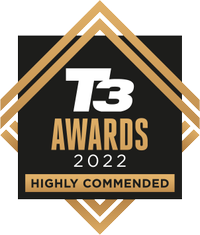
Although it is just marginally usurped by the DJI Mavic Classic, this little drone's low sub-250g weight, its smorgasbord of tantalising tech, ability to fly in slightly stronger winds and great low price make it our top choice for most users.
The newest addition to DJI's popular sub-250g Mini series launched shortly after the Autel drone in our #4 spot, and at the time of release it was an extremely close fight between the two. The Mini 3 Pro sports forward, rearward and downward obstacle sensing, a flight time of up to 34 minutes and a low-interference transmitter range of up to a phenomenal 7.4 miles.
There are some improvements to the camera, too, including a CMOS sensor that, at 1/1.3-inch, is a little larger than that fitted to the current DJI Mini 2 (although still a bit smaller than the 0.8-inch sensor in the Evo Nano+). On the plus side, the Mini 3’s camera is also equipped with a really wide f1.7 aperture for low-light shooting and the wherewithal to be tilted vertically for Instagram and TikTok posting. Regarding video footage, the Mini 3 Pro is capable of shooting 4K at up to 60p though this writer still prefers the sharpened image of the Autel Evo Nano+.
Read our full DJI Mini 3 Pro review

This is the prosumer drone we’ve all been waiting for. Yes, the drone itself is the same as the current Mavic 3 but this one takes aerial videography and photography to a much higher echelon. You get three cameras with this drone: a wide-angle 24mm Hasselblad with an aperture range of f/2.8-f/11 and an 84˚ field of view; an all-new 3x 70mm medium tele camera with a 35˚ field of view and a fixed aperture of f2.8; and a 166mm 7x zoom lens with a large-ish aperture of f3.4.
This means you can create amazing widescreen landscape shots, zoom in a little to add a striking shallow depth of field or zoom in from afar to shoot wildlife without any disturbance from the drone. You also get premium resolution – 5.1K at up to 50 frames per second and 4K at up to 120fps – and huge images from 20 megapixels to 48MP.
If you’re looking for a do-it-all pro-spec camera drone that flies supremely well and delivers impeccable imagery flight after flight, this is the model for you.
Now read our full review of the DJI Mavic 3 Pro


The little Evo Nano+ is a sterling choice of camera drone for both amateurs and prosumers, as well as anyone who wants to enjoy the thrills of high-quality aerial cinematography on a relative budget and without the need to apply for a special license to fly it. In fact, we like it so much that we awarded it Best Drone at the 2022 T3 Awards (although it's a seriously close-run thing with the DJI Mini 3 Pro).
The Plus boasts a wide f1.9 aperture and RYYB filtering, which means it will shoot stunning footage in low-light conditions and in full 4K video and 50MP for stills. This dinky drone clocks in at under 250g, which means you won’t need to jump through as many legal hoops before taking to the skies. The sharpness and clarity of the Nano+ are exemplary for a drone of this size and weight, hence why we think this drone is perfect for amateur filmmakers and anyone looking for a camera drone that’s light as a feather and small enough to slip into a coat pocket.
Read our full Autel Evo Nano+ drone review

Released in April 2021, the DJI Air 2S is a sensational camera drone in every respect. Despite being lightweight and eminently portable, this foldable drone packs some incredible onboard tech, including a 1-inch CMOS sensor that enables you to capture strikingly sharp images and video. The Air 2S will shoot 5.4K video at 30fps or 4K at 60fps and 150Mbps, as well as 20MP stills (by comparison, the older but still worthy Mavic Air 2's half-inch CMOS sensor can manage 4K/60fps at 120Mbps and 12MP stills). The Air 2S also flies absolutely beautifully (and quietly), comes with four-way obstacle sensors to help you avoid collisions, and boasts some impressive advanced in-flight features.
Head to our DJI Air 2S review for more of what we thought of it, or see how it matches up against its predecessor in our DJI Air 2S vs DJI Mavic Air 2 comparison.

The diminutive Autel Evo Nano is the slightly less high-spec version of the Nano+ at number 1, but it's still a sensational drone – and just pips the also superb DJI Mini 2 in our best drone ranking. Like the DJI Mini 2, the Evo Nano weighs under the CAA’s magic 250g limit, which means it’s a doddle to transport, and you don’t have to register it for a next-level licence.
However, unlike the Mini 2, this one comes with three-way obstacle sensing – a handy safety feature for both beginners and amateur aerial videographers. The camera isn't as impressive as you'll find on the Evo Nano Plus version, but it still punches way above this drone's weight class, with a 1/2-inch sensor that will shoot 4K video and amazing 48MP stills with plenty of wow factor.
The hand controller’s well designed, and we're particularly fans of the beautifully weighted gimbal wheel, which allows for really smooth, progressive camera movement with no sudden lurches. Another cool feature is the pin-sharp 2.7K live feed to the phone’s screen, something that very few camera drones are capable of.
Read our full Autel Evo Nano review

Released in November 2021, the Mavic 3 is DJI's first compact, professional-level drone, and it's absolutely outstanding, as our five-star review will attest (linked below). This foldable drone comes equipped with not one but two cameras: a next-level, four-thirds Hasselblad camera that produces the best video footage and stills you could ever hope for, plus a separate zoom camera with 28x hybrid zoom, specifically for scouting far-away subjects without having to fly there.
Four-sided obstacle avoidance and a maximum flight time of 45 minutes – the longest of any drone here – round out an incredible package. Of course, for most flyers, this level of competence is overkill, as is the inevitable hefty price tag that comes with it, which is why the Mavic 3 sits slightly further down our best drone ranking.
Read our full DJI Mavic 3 drone review or see how it compares to another addition to the DJI lineup in our DJI Mavic 3 vs DJI Air 2S face-off.

At just 18cm in width, the Avata is small enough to fly through a 250 mm gap, and because it’s of DJI origin, it’s ready to fly straight out of the box and equipped with lots of safety tech and flying aids that you simply don’t get with build-it-yourself models. The Avata ships with an excellent stereoscopic headset that receives stunningly sharp images from the drone’s 4K camera, plus a brilliant gyroscopic hand controller that makes flying it a confidence-inspiring breeze.
The Avata is commonly classified as a CineWhoop – a type of drone that shoots a different style of 4K footage from the norm. Hence, instead of the horizon always remaining flat like a standard DJI drone, the Avata’s footage swoops and dives like a bird of prey. This is a sterling introduction to FPV flying that creates sensational eye-popping footage, but it’s not the kind of drone for anyone wanting to get into aerial cinematography for the very first time. In that respect, the DJI Mini 3 Pro or Autel Evo Nano+ would be better choices.
Read our full DJI Avata review

Despite being firmly outshone by its successor (the Air 2S above), the DJI Mavic Air 2 is still a great drone worth checking out, not least because its price has been considerably reduced. The camera is a cracker and sports a half-inch sensor capable of shooting 4K footage at 60fps. The Mavic Air 2’s stills-taking capacity is even more impressive – up to 48mp resolution for unprecedented sharpness, clarity and detail. It also comes with a smorgasbord of extra photo and video enhancement tech, including Scene Recognition, Spotlight 2.0, which locks the camera on a subject while the pilot does the flying and the obligatory ActiveTrack for following moving subjects.
The completely redesigned hand controller is another major improvement. Yes, it’s larger than before, but it’s really comfortable in the hand. The Mavic Air 2 has a long battery life (34 minutes), too, and in Sport mode, it rips across the sky at up to 42.5mph. It also features three-way obstacle avoidance and APAS (Advanced Pilot Assistance System) for smoother manoeuvrability around obstacles.
Head to our Mavic Air 2 review for more info, and see how it compares to our #4 pick in our DJI Mini 2 vs DJI Mavic Air 2 face-off.

The DJI FPV is the world’s first fully-fledged, ready-to-fly 4K-quipped FPV racing drone for newbies. Unlike other FPV drones on the market, the DJI FPV is equipped with a wide range of safety measures, including smart Return-to-Home (RTH), low battery warning and forward and downward obstacle sensors that will bring the drone to a halt in an emergency.
Being of FPV origin, this drone comes with a pair of goggles that produce an exceptionally sharp image of what the drone’s front camera sees. The ultra-wide 150-degree field of view is another major plus that gives the flyer full confidence when darting in and around tight, tricky spaces. It also ships with a beefy hand controller, or you can stump up for an optional Motion Controller that lets you control the drone using hand motions alone.
Read our full DJI FPV review

If there was an award for the best-looking drone, the PowerVision PowerEgg X would walk it – it looks simply fantastic when airborne. It performs most of the aerial tasks of the DJI and Autel rosters – including front obstacle avoidance and autonomous flight modes like return-to-home, follow-me, orbit and timelapse – but goes two stages further by transforming into a hand-held stabilised camera of sorts and a tripod-mounted video recorder with motion tracking ability.
The PowerEgg X is as stable in flight as the majority of DJI drones we’ve tested, and it will stay in the air for up to 30 minutes. It comes with a fixed focus 4K camera with a 1/2.8 inch CMOS sensor, and on paper, that sounds grand. However, while the footage it produces is good, it’s nowhere near the high-end benchmark set by Autel or DJI.
The Wizard comes with two robust strap-on floats and a fully waterproof housing that protects the entire body and camera. It can even land and take off from calm water and fly in both rain and snow, wind speed permitting. So, if flying over water scares the life out of you, then a drone of this nature could well be your lifeline.
Read our full PowerVision PowerEgg X Wizard Version review
How to buy the best drone for you
In order to figure out which is the best drone for you, it really helps to understand a bit about how different types of drones work. In a nutshell, drones rely on rotors for propulsion and control. The faster these rotors spin, the greater the upward lift. The movement of a drone can be changed by altering the speed of one or more of its rotors.
These rotors are powered by motors which can be 'brushed' or 'brushless'. The difference? Brushed motors use a mechanical process (a 'commutator') to move the magnetic field that turns the rotors. Brushless motors, which are usually found on more expensive drones, are generally preferable and rely more on electronics rather than additional physical parts, such as the brushes in the commutators, to generate power. This means they generate less friction (and bear in mind that friction slows the motor down), produce less heat and provide better all-around performance.
Another important factor to take into consideration is skill level. Beginners should look for more rugged models, as well as features such as rotor protectors and one-touch recall controls. But don’t make the mistake of assuming smaller, lighter drones are better for beginners – these drones are often designed for those keen to perform complex aerial manoeuvres and might well be trickier to control.
Finally, remember to look for drones with the features you’re specifically keen on, and no more. Opting for a drone which boasts features you don’t need and won’t use will mean you’ll spend more on a drone which will weigh more and won’t perform in the way you want it to.
FAQ
What is the best drone you can buy?
After much deliberation and many comparison tests, we’ve come to the conclusion that the best drone for most people is the sub-250g DJI Mini 3 Pro, hotly followed by the equally small Autel Evo Nano+, which has better low-light shooting capability.
Our #3 model of choice is the new DJI Mavic 3 Classic which drops the standard Mavic 3’s long-range zoom camera in favour of a dramatically lower price. If you want a drone that can shoot pro-quality footage and stills for not much wonga, this is the one for you.
Finally, for the ultimate in equally affordable high-end video and image quality, consider the exceptional Autel Evo Lite+ or the standard DJI Mavic 3, which features an extra zoom camera along with its four-thirds Hasselblad. Neither of these drones will disappoint if pro-level aerial videos and photos are your chief prerequisites.
If you're new to the drone world, jump to what to know before buying a drone (or check out our UK drone flying regulations guide or US drone regulations) first.




